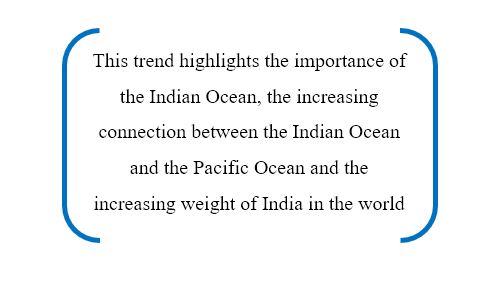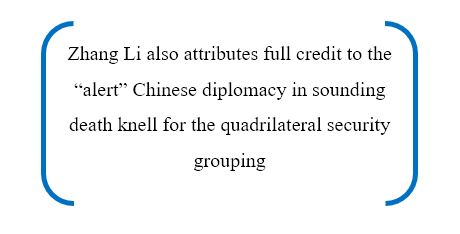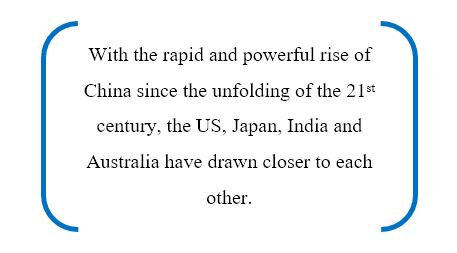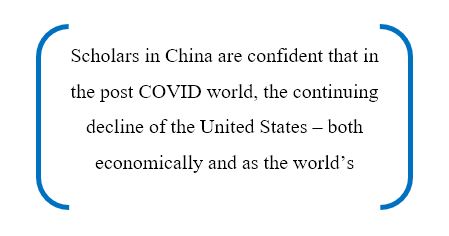Ananya Raj Kakoti, ResearchIntern, ICS

The new world order has been in the making for long, and the COVID-19 pandemic has only acted as a catalyst towards its formation. The axis of power of this world order is tilting toward the geopolitical and geo-economic construct of the Indo-Pacific. This has also led to the subsequent rise of the Indian Ocean Region within the larger geopolitical context. This region has already been dealing with several non-traditional security threats; COVID-19 further adds to this. COVID-19 has not only severely affected public health on a global level, deeming it to be a pandemic but has also put the economy of the world in turmoil along with various geopolitical disruptions and security considerations.
The last decade has seen a rise in regionalism and also a shift of the axis of global power from the West to the East, especially in the context of the Indo-Pacific region at large, and particularly the Indian Ocean Region. The pandemic has ensured that the world can witness this shift and balance of power within the region at an accelerated pace. A post-COVID world will require states to find new alliances and geopolitical alignments to secure their interests. The Indian Ocean Region (IOR) is also witnessing a race among the rival powers to establish their authority amidst this chaos.

National interests and goals of the countries will be pivotal in determining the new geopolitical partnerships that the countries will get involved in the Indian Ocean Region to maximise their gains.
The lockdown led to an economic slowdown, which will force more countries to look for other sources of revenue outside their borders, leading to them being drawn into debt-traps. These traps will be used to their strategic advantages by the investing nations. The Indian Ocean island countries lack the capacity to take advantage of their maritime resources. They also have a hard time facing the threats of piracy, illegal drug-trafficking, and the flow of illegal migrants. The consequential socio-economic challenges put forth by the pandemic has highlighted the internal fissures, which can ultimately cause domestic political instability in a number of countries. Their economic vulnerability leads to increasing internal power conflicts, which are exploited by the external states, causing further fragmentation.
As the vaccine race takes its pace, Russia has already offered Sputnik V to UN employees for free, while China has extended its vaccine diplomacy to Indonesia. However, with its profess in vaccine development, India is on track to emerge as the leader in the new “vaccine diplomacy.” India is not only using this new tool as a way to gain strategic allies in its neighbourhood extending all over South Asia but also beyond its immediate border and all the way to Africa.
The lockdown has also come as a threat to the advancement of globalisation as the pandemic has forced the countries to look inward than outward to meet their needs. The interdependency because of globalisation also aided in forming alliances. With the Indian Ocean Region at the centre of geopolitical realignments, one must understand some important aspects while analysing these trends from the perspective of the geopolitical interests of the various stakeholders, comprising of island countries, regional power, revisionist power, and the hegemonic power. The realignments forced by COVID-19 has also threatened the idea of a ‘Free and Open Indo-Pacific’ in the Indian Ocean Region.

In the Western Indian Ocean, the inability to enforce the laws makes it vulnerable to drug smuggling, human trafficking, terror financing, and ease of terrorist and criminals movements both on land and at sea. This region has rampant illegal, unreported, and unregulated (IUU) fishing activities as well. The pandemic is further adding to the misery of the countries in the Horn of Africa through its uncertainties as they are still struggling with issues such as food insecurities, humanitarian issues, ethnic conflicts, economic challenges, debts, and locust swarms. One can witness an increasing competition for establishing naval bases, especially in the post-COVID-19 world order, amplifying the concerns about securing navigation routes as it signifies an intense race among the stakeholders to control the choke points. One can also witness the rise in tensions due to the ongoing conflicts which threaten the freedom of navigation through the Strait of Hormuz, which is a critical passage in the global trade route in the Persian Gulf. The modernisation drive of the Pakistan Navy can disrupt the existing regional balance of power, especially because of China’s strong naval alliance with Pakistan. The Arabian Sea witnessed the Malabar Exercise, which saw the participation of India, the United States of America, Japan, and Australia, who form the ‘QUAD.’ This exercise concluded with the intent of sending a clear message to an expansionist China.
The Eastern Indian Oceansubregion is threatened by human trafficking, drug trafficking, piracy, and Jihadist militancy. The weaknesses of the littoral states around the Bay of Bengal acts as a catalyst to these problems. The region is also prone to extreme weather conditions, which further weakens the states. However, one can observe the changes in the Bay of Bengal region, as the naval capabilities of the littoral states are increasing. This proves that these states are becoming aware of the importance of their maritime zones, which can be observed in their capacity building operations to ensure the region’s security. The Bay of Bengal also witnessed the first phase of the Malabar Exercise involving the ‘QUAD’.
The reactive approach of the USA gives the impression that it is unlikely to play a significant role in shaping a new maritime system in the region. The existing national security perspective of America focuses largely on strengthening an advantageous political environment in the Middle East and the Persian Gulf, along with managing the Chinese naval presence. Although China does not have an officially recognised policy on the Indian Ocean, the Chinese involvement in the Indian Ocean Region can lead to a change in the regional balance of power, disrupting the existing security architecture. India, on the other hand, has come up with SAGAR, “Security and growth for all in the region” policy, and the Shangri-La speech vision of India for the Indo-Pacific is rooted in the concept of a free, open, and inclusive maritime order. India has taken up the approach of becoming a “net security provider,” considering the Indian Ocean Region to be in its backyard and intending to keep the Indian Ocean as India’s Ocean’ as pointed out by KM Panikker. Under ‘Mission Sagar’, India has been assisting Mauritius, Maldives, Seychelles, Comoros, Madagascar, and so on, with not only COVID-19 but also with dengue outbreaks. One can also observe increasing logistical and tactical interoperability of nations involved in the MALABAR series of exercises that facilitate enhanced situational awareness.

France is a littoral state to the Indian Ocean through its overseas territories allowing France to maintain a strong military presence in the region. Realising the importance of the construct, France announced its Indo-Pacific strategy in 2018. Although traditionally France has focused on the Western Indian Ocean, it is expanding its interest towards the Eastern front as well, while acknowledging India as a Strategic Partner in the region. For Germany, the Indian Ocean has become a “strategic and diplomatic priority” with its rising geopolitical and geo-economic significance. In November 2020, the defence minister of Germany announced their warship will patrol the Indian Ocean Region to manage China’s influence in the region.
Given the dynamic turn of events, stakeholders should move promptly to build a holistic maritime security system in the Indian Ocean. Priority should be given to strengthening maritime security and safety through capacity building and dealing with various traditional and non-traditional challenges. It is crucial to maintain stability and peace in the region, and hence, must be on the agenda of all the stakeholders involved, irrespective of their national interests. The Indian Ocean is important to India, and being located at the heart of the region, India should move beyond ‘sea denial’ to a ‘sea control’ approach and, given the present situation and opportunity, develop robust maritime diplomacy. The security dimensions in the Indian Ocean are bound to change, and it will be a deciding factor in the future of global power politics. The current world order will change, whether some like it or not, and the pace of the change has quickened surprisingly, because of a virus.




